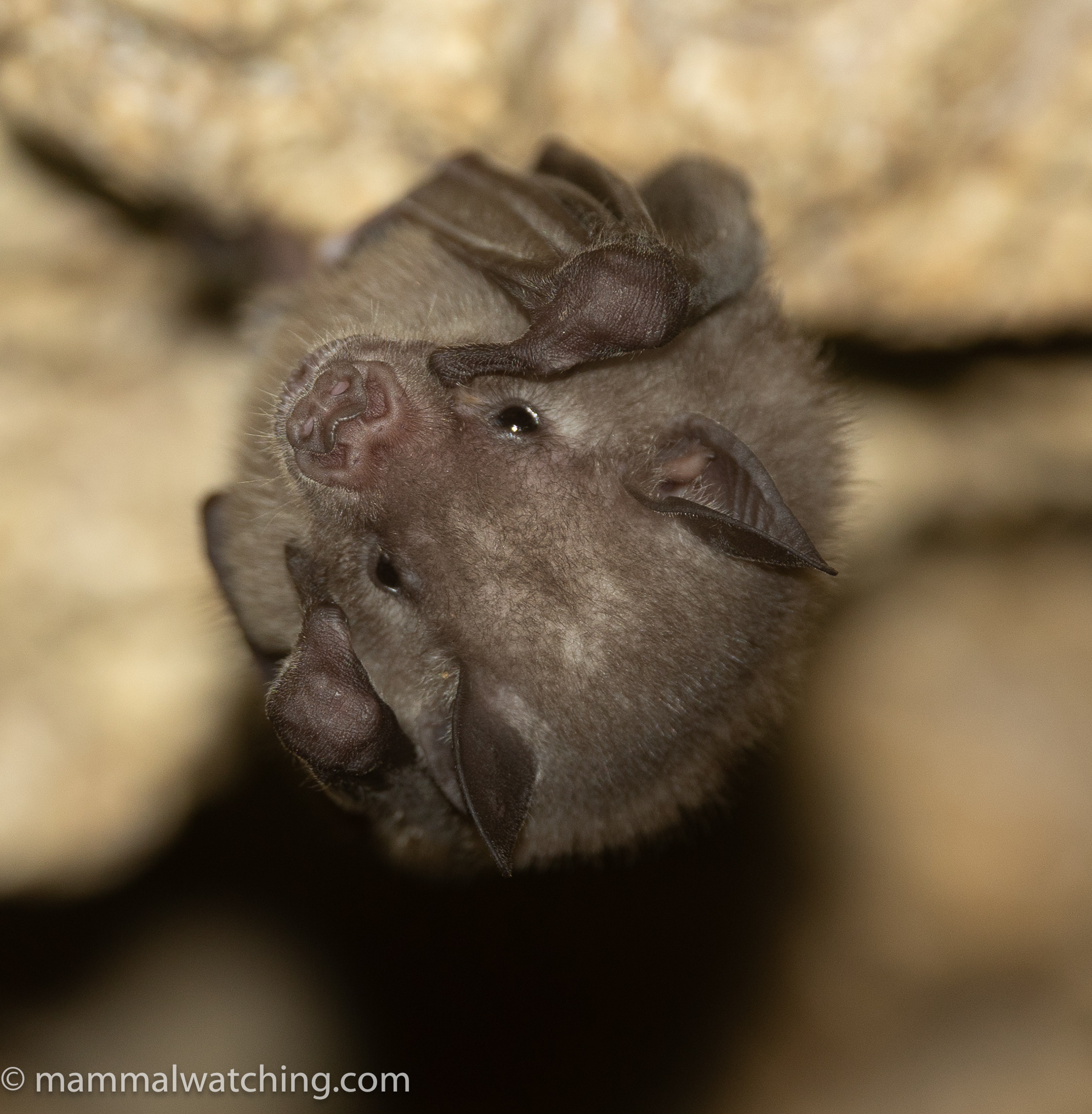
Bats in Barbados, 2025
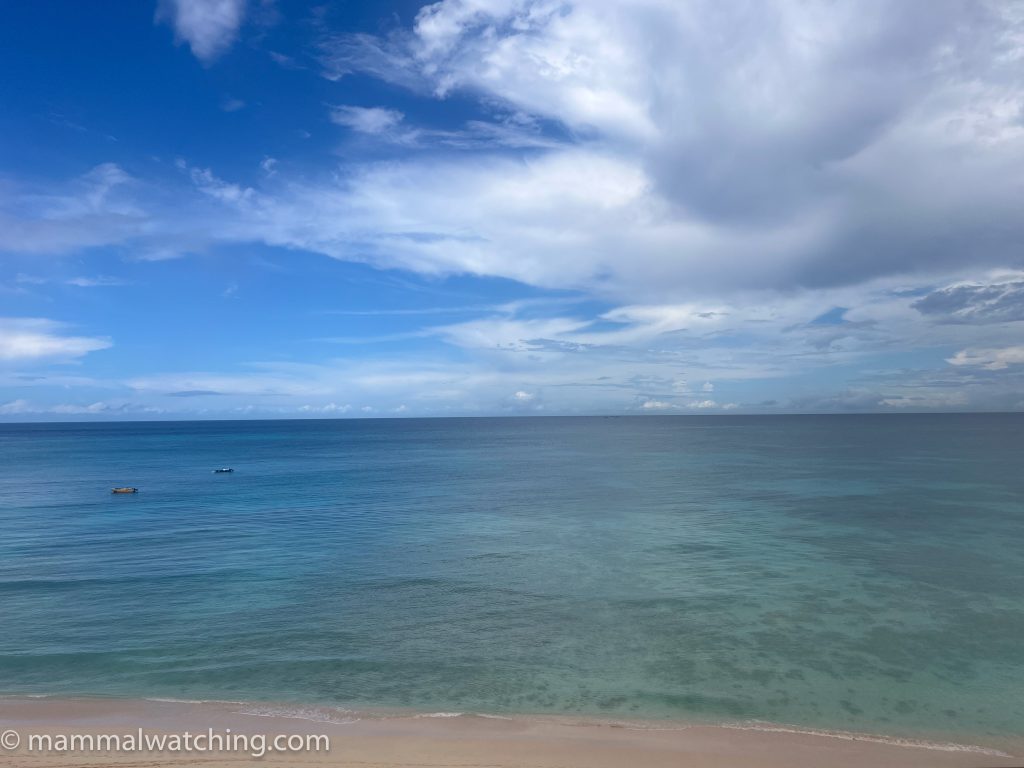
I spent the weekend in Barbados with some Australian mates who were there to watch Australia play cricket against the West Indies. Although I arrived too late to catch the test match – which finished two days early – I was, far more importantly, able to visit a bat cave and snag a new mammal.
Barbados’s only native land mammals are bats and from what I could gather – based on this helpful paper – there are just six species confirmed on the island. Greater Fishing Bat; Antillean and Jamaican Fruit-eating Bats; Insular Single-leaf Bat; Barbadian Myotis; and Pallas’s Mastiff Bat.
I had seen neither the endemic myotis nor the Insular Single-leaf Bat so I turned my attention to those species and contacted Hugh Genoways, the lead author of the 2012 Bats of Barbados paper (required reading if you visit the island). Hugh was helpful, recommended against trying to find caves on my own, and suggested I contact Emeritus Professor Julia Horrocks from the University of the West Indies who had given him help almost 20 years earlier. Julia in turn was kind enough to connect me to Zack from Wild Barbados, a local tour company.
Hugh’s paper included records of Insular Single-leaf Bat from Harrison’s Cave, and the Myotis from Cole’s Cave. Zack explained that Harrison’s Cave was now a major tourist attraction that comes complete with electric lighting and its own train ride. Their website proudly boasts that it is bat free and that visiting cruise ship passengers do not need to get a rabies shot to visit. Sigh.
Cole’s Cave, however, had escaped development and Zack assured me it was “full of bats” so I booked him for an afternoon tour.
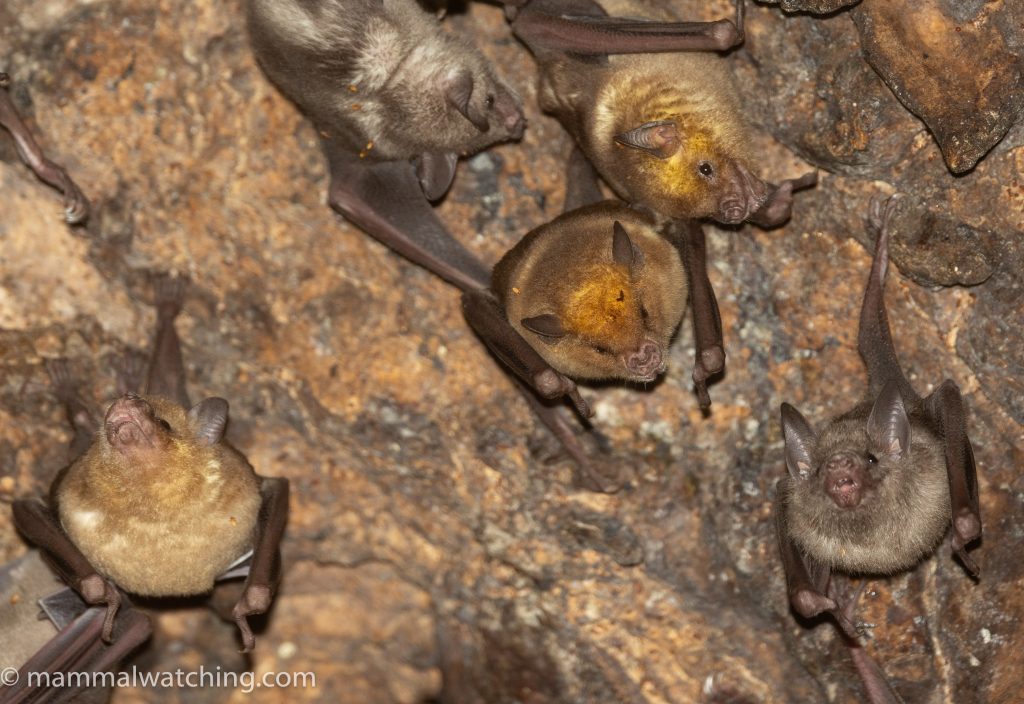
Antillean Fruit-eating Bat (Brachyphylla cavernarum)
Unlike just about everywhere else in Barbados, Cole’s Cave is free to enter. Of course I paid Zack for the tour but he only charged about $100 USD which – in Barbados – is remarkably good value for money. Barbados is many things but ‘bargain holiday destination’ is not one of them!
I would strongly advise against attempting to enter the cave alone. First, finding the entrance would be a major challenge in itself, but once inside you have to do some moderate climbing with ropes (‘moderate’ means I was just about able to do it with a bit of help), scramble under rock overhangs low to the ground and wade through chest-deep water. Even if I had stumbled on the entrance I would have been nervous about tackling some of those obstacles alone. It is a fabulous cave to explore – one of the most fun caves I have ever been into – and, as promised, there were tons of bats. Zack was also a great guide. He loves his job and he was as excited about me about finding the bats.
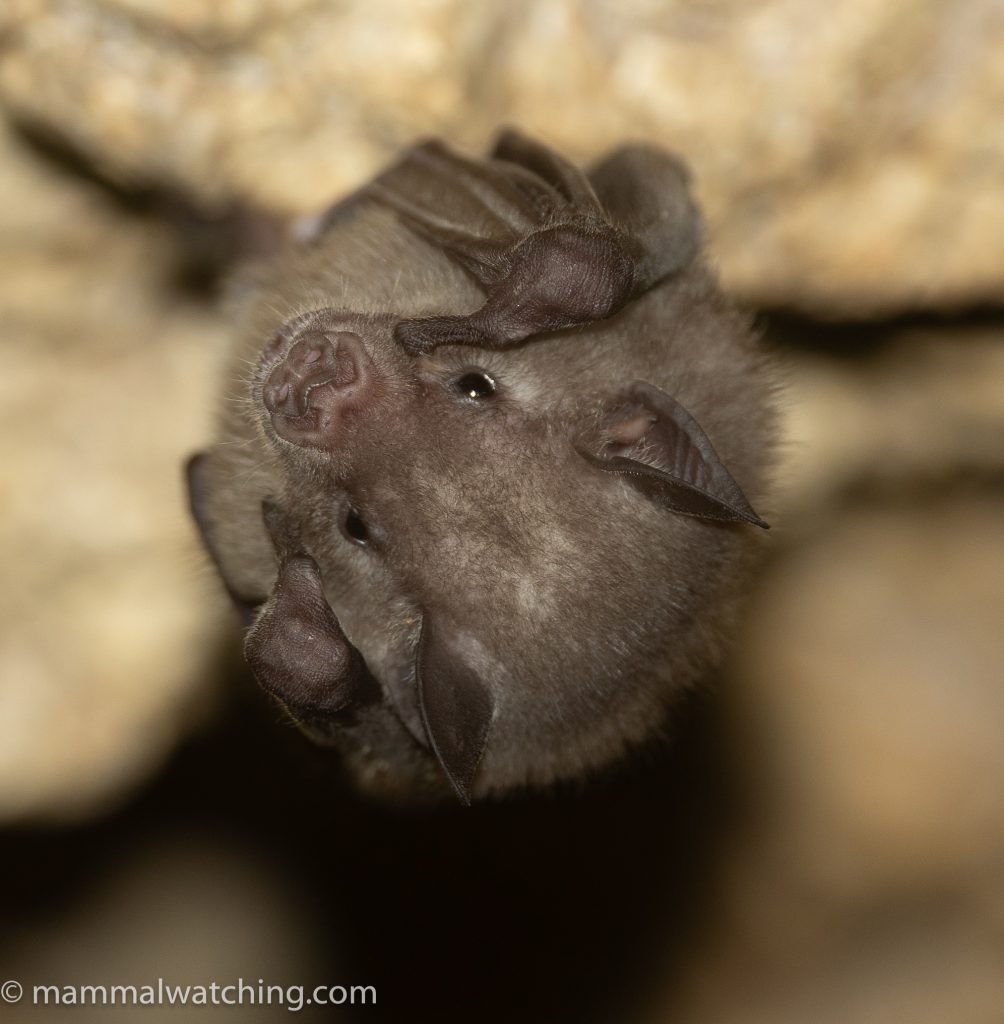
Antillean Fruit-eating Bat (Brachyphylla cavernarum)
Soon after entering the cave we reached a T-junction. The chamber to the right contained hundreds of Antillean Fruit-eating Bats in what appeared to be a maternity colony. This is a chunky bat that I had only seen once before in Puerto Rico.
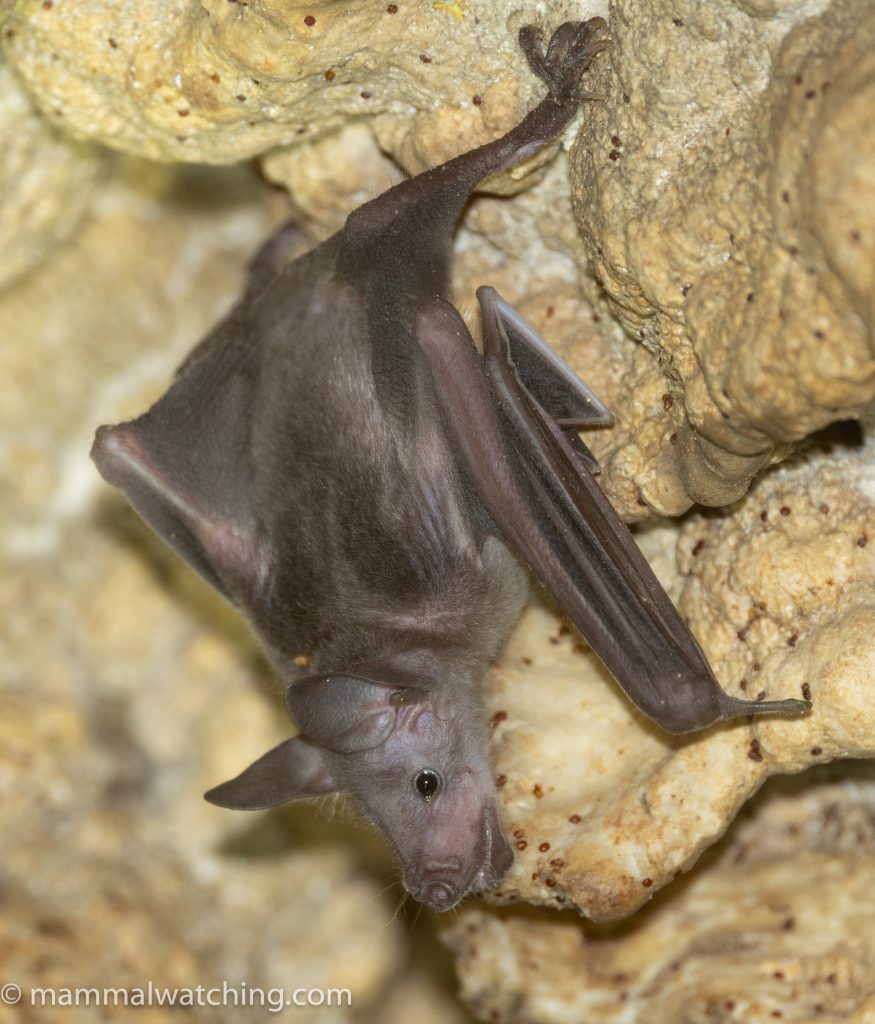
Antillean Fruit-eating Bat pup (Brachyphylla cavernarum)
We backtracked to the main ‘tourist’ route and continued following an underground creek for about 30 minutes to reach what Zack described as the ‘main chamber’, where the roof was far higher than sections we we had been walking – sometimes crawling – under.
We had seen a few much smaller myotis flitting through the tunnels along the way and Zach guessed they might prefer to roost in areas where the ceiling was higher. He guessed right: in the main chamber there were many bats roosting in tight clusters a hundred feet above us.

Barbados Myotis (Myotis nyctor)
Photography was a challenge due to the combination of humidity, moisture dropping from the ceiling, sweat rolling into my eyes and the distance of the bats above us. But I managed to get a few record shorts which are the first images of the species on iNaturalist. As always, you need to avoid shiningy bright lights on bats so as not to disturb them and close range flash photography can also stress the animals.
Many thanks to Hugh Genoways and Julia Horrocks for their help and to Zack for a very fun afternoon in the cave.
Mammals were thin on the ground elsewhere on the island. I saw what I think was a Jamaican Fruit-eating Bat flying at night near Bradon’s Beach in Bridgetown, a Black Rat outside a fast food restaurant and missed a couple of Javan Mongooses dashing across the road in the north of the island.
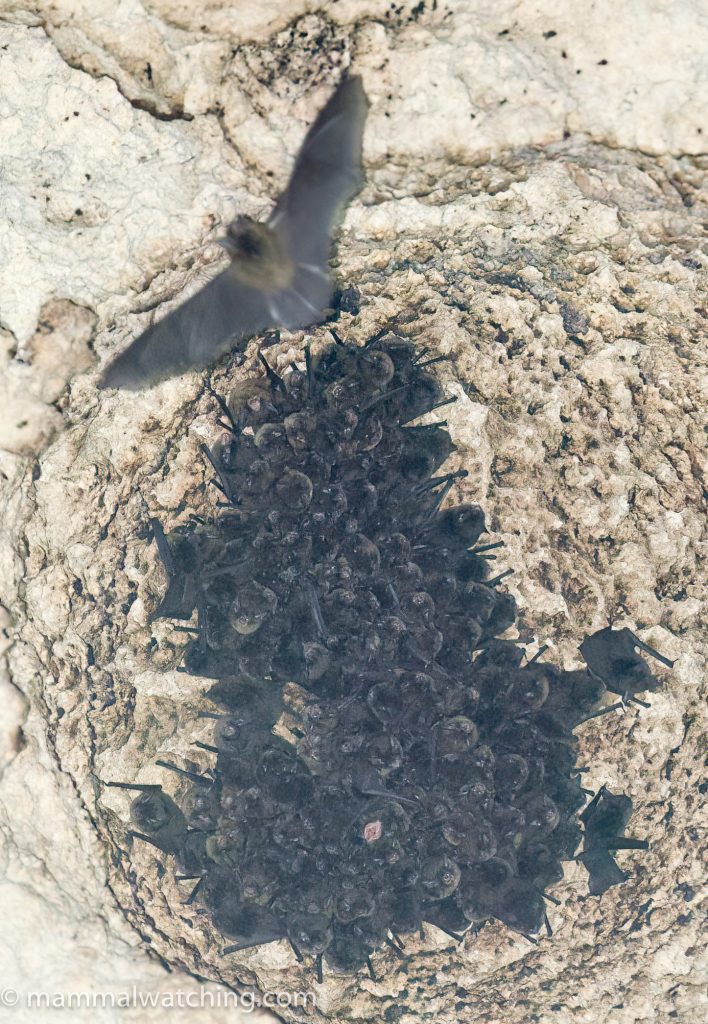
Barbados Myotis (Myotis nyctor)
Post author


Leave a Reply
You must be logged in to post a comment.